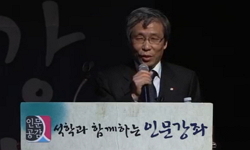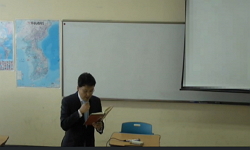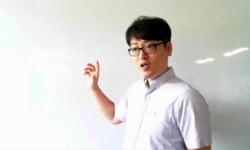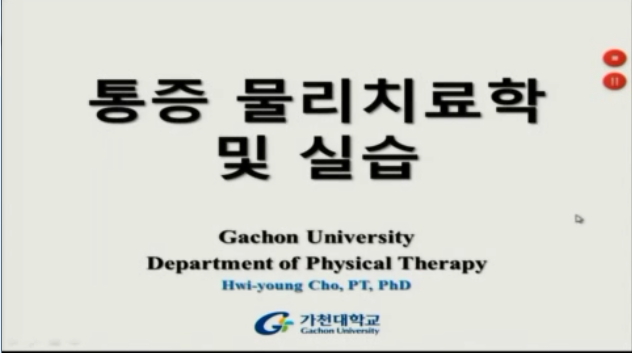이 연구는 20세기 ‘해’체 어미가 의미·기능에 따라 실현되는 양상과 20세기 ‘해’체의 사용 양상을 살펴봄으로써 화계 사용의 변화를 밝히고자 하였다. ‘해’체 어미 ‘-지’, ‘-군’�...
http://chineseinput.net/에서 pinyin(병음)방식으로 중국어를 변환할 수 있습니다.
변환된 중국어를 복사하여 사용하시면 됩니다.
- 中文 을 입력하시려면 zhongwen을 입력하시고 space를누르시면됩니다.
- 北京 을 입력하시려면 beijing을 입력하시고 space를 누르시면 됩니다.

20세기 종결어미의 의미·기능 실현 양상에 따른 화계 사용의 변화 - ‘해’체를 중심으로 - = Changes in the Use of Speech Level Depending on Realization of Meaning Function of Final Endings in 20th Century - Focusing on ‘Hae’ Style
한글로보기https://www.riss.kr/link?id=A109784404
-
저자
이소흔 (서울시립대학교)
- 발행기관
- 학술지명
- 권호사항
-
발행연도
2025
-
작성언어
Korean
-
주제어
Final Ending ; Hearer-honorific ; Speech level ; Modality ; Hae style ; Haeyo style ; Hage style ; -ji ; -gun ; -nji ; -lji ; 종결어미 ; 청자 대우법 ; 화계 ; 양태 ; 해체 ; 해요체 ; 하게체 ; -지 ; -군 ; -ㄴ지 ; -f지
-
등재정보
KCI등재
-
자료형태
학술저널
-
수록면
185-228(44쪽)
- 제공처
-
0
상세조회 -
0
다운로드
부가정보
국문 초록 (Abstract)
‘해’체는 ‘반말’체라고 하는데 ‘반말’은 “뒤가 잘린 말”을 의미하지만 “어린아이의 말”, “낮춤말”로 개념이 변화한다. ‘해요’체보다 늦게 체계화된 ‘해’체는 다른 화계에 혼용되다가 어린아이에서 여성으로 그리고 남성으로 화자가 확대되며 하나의 화계로 체계화된다. 이러한 과정에서 ‘해’체의 문말 억양은 ‘하게’체와 달라져 상승하는데, 이러한 양상은 Praat 실험을 통해 확인하였다.
이 연구는 20세기 ‘해’체 어미가 의미·기능에 따라 실현되는 양상과 20세기 ‘해’체의 사용 양상을 살펴봄으로써 화계 사용의 변화를 밝히고자 하였다. ‘해’체 어미 ‘-지’, ‘-군’과 ‘-ㄴ지, -ㄹ지’는 의미·기능에 따라 실현되는 양상이 달라지며 화계 양상도 변화한다. ‘-지’와 ‘-군’은 ‘해’체 어미지만 사용 양상에 따라 ‘하게’체로 실현되며, ‘해’체 ‘-ㄴ지/-ㄹ지’는 그것이 가지고 있는 의미로 인해 화계가 더 높게 실현되기도 하는 것이다.
‘해’체는 ‘반말’체라고 하는데 ‘반말’은 “뒤가 잘린 말”을 의미하지만 “어린아이의 말”, “낮춤말”로 개념이 변화한다. ‘해요’체보다 늦게 체계화된 ‘해’체는 다른 화계에 혼용되다가 어린아이에서 여성으로 그리고 남성으로 화자가 확대되며 하나의 화계로 체계화된다. 이러한 과정에서 ‘해’체의 문말 억양은 ‘하게’체와 달라져 상승하는데, 이러한 양상은 Praat 실험을 통해 확인하였다.
다국어 초록 (Multilingual Abstract)
The ‘Hae’ style is considered as ‘banmal’ style (or informal speech) and ‘banmal’ style literally means ‘words with their backs cut off,’ but the concept has shifted into ‘child’s speech’ or ‘familiar speech.’ The ‘Hae’ style was systemized later than the ‘Haeyo’ style and was mixed in with other speech levels before its speakers expanded from children to women and then finally to men as it became systemized as a form of speech level. Through such processes, the ‘Hae’ style’s sentence ending intonations becomes different to the ‘Hage’ style and thus has become elevated; such aspects have been confirmed through the Praat experiments.
This study was conducted to reveal the following: the aspects that are realized from the 20th century ‘Hae’ style endings and secondly, the changes in the use of speech levels through the examination of the usage of 20th century ‘Hae’ style en...
This study was conducted to reveal the following: the aspects that are realized from the 20th century ‘Hae’ style endings and secondly, the changes in the use of speech levels through the examination of the usage of 20th century ‘Hae’ style endings. The aspects that become realized depending on the meaning and function of the ‘Hae’ style endings of ‘-ji,’ ‘-gun,’ ‘-nji,’ and ‘-lji’ change, as well as aspects of the speech level. The ‘-ji’ and’-gun’ are the endings of the ‘Hae’ style but depending on its usage they could become realized in the form of the ‘Hage’ style. Furthermore, the ‘-nji/-lji’ endings of the ‘Hae’ style – with their inherent meaning – could lead to a higher realization of the speech level.
The ‘Hae’ style is considered as ‘banmal’ style (or informal speech) and ‘banmal’ style literally means ‘words with their backs cut off,’ but the concept has shifted into ‘child’s speech’ or ‘familiar speech.’ The ‘Hae’ style was systemized later than the ‘Haeyo’ style and was mixed in with other speech levels before its speakers expanded from children to women and then finally to men as it became systemized as a form of speech level. Through such processes, the ‘Hae’ style’s sentence ending intonations becomes different to the ‘Hage’ style and thus has become elevated; such aspects have been confirmed through the Praat experiments.
동일학술지(권/호) 다른 논문
-
교육 목적 동화의 서사전략과 문학교육적 의의 - 과학동화 『와이즈만 과학동화 시리즈』를 중심으로 -
- 영주어문학회
- 박성애
- 2025
- KCI등재
-
- 영주어문학회
- 강석한
- 2025
- KCI등재
-
직장 내 호칭어 사용에 대한 사회언어학적 연구 - 뉴스 자료와 드라마 자료 분석을 바탕으로 -
- 영주어문학회
- 장교진
- 2025
- KCI등재
-
- 영주어문학회
- 전계영
- 2025
- KCI등재




 KCI
KCI KISS
KISS






